Queen of the Damned Read online
Page 21
The main characters of the work—rather glamorous immortals when you got right down to it—had formed an evil little family in antebellum New Orleans where they preyed on the populace for over fifty years. Lestat was the villain of the piece, and the leader. Louis, his anguished subordinate, was the hero, and the one telling the tale. Claudia, their exquisite vampire “daughter,” was a truly tragic figure, her mind maturing year after year while her body remained eternally that of a little girl. Louis’s fruitless quest for redemption had been the theme of the book, obviously, but Claudia’s hatred for the two male vampires who had made her what she was, and her own eventual destruction, had had a much stronger effect upon Jesse.
“The book isn’t fiction,” David explained simply. “Yet the purpose of creating it is unclear. And the act of publishing it, even as a novel, has us rather alarmed.”
“Not fiction?” Jesse asked. “I don’t understand.”
“The author’s name is a pseudonym,” David continued, “and the royalty checks go to a nomadic young man who resists all our attempts at contact. He was a reporter, however, much like the boy interviewer in the novel. But that’s neither here nor there at the moment. Your job is to go to New Orleans and document the events in the story which took place there before the Civil War.”
“Wait a minute. You’re telling me there are vampires? That these characters—Louis and Lestat and the little girl Claudia—are real!”
“Yes, exactly,” David answered. “And don’t forget about Armand, the mentor of the Théâtre des Vampires in Paris. You do remember Armand.”
Jesse had no trouble remembering Armand or the theater. Armand, the oldest immortal in the novel, had had the face and form of an adolescent boy. As for the theater, it had been a gruesome establishment where human beings were killed on stage before an unsuspecting Parisian audience as part of the regular fare.
The entire nightmarish quality of the book was coming back to Jesse. Especially the parts that dealt with Claudia. Claudia had died in the Theater of the Vampires. The coven, under Armand’s command, had destroyed her.
“David, am I understanding you correctly? You’re saying these creatures exist?”
“Absolutely,” David answered. “We’ve been observing this type of being since we came into existence. In a very real way, the Talamasca was formed to observe these creatures, but that’s another story. In all probability, there are no fictional characters in this little novel whatsoever, but that would be your assignment, you see—to document the existence of the New Orleans coven, as described here—Claudia, Louis, Lestat.”
Jesse laughed. She couldn’t help it. She really laughed. David’s patient expression only made her laugh more. But she wasn’t surprising David, any more than her laughter had surprised Aaron Lightner eight years ago when they first met.
“Excellent attitude,” David said, with a little mischievous smile. “We wouldn’t want you to be too imaginative or trusting. But this field requires great care, Jesse, and strict obedience to the rules. Believe me when I say that this is an area which can be extremely dangerous. You are certainly free to turn down the assignment right now.”
“I’m going to start laughing again,” Jesse said. She had seldom if ever heard the word “dangerous” in the Talamasca. She had seen it in writing only in the witch family files. Now, she could believe in a witch family without much difficulty. Witches were human beings, and spirits could be manipulated, most probably. But vampires?
“Well, let’s approach it this way,” David said. “Before you make up your mind, we’ll examine certain artifacts pertaining to these creatures which we have in the vaults.”
The idea was irresistible. There were scores of rooms beneath the Motherhouse to which Jesse had never been admitted. She wasn’t going to pass up this opportunity.
As she and David went down the stairs together, the atmosphere of the Sonoma compound came back to her unexpectedly and rather vividly. Even the long corridor with its occasional dim electric bulbs reminded her of Maharet’s cellar. She found herself all the more excited.
She followed David silently through one locked storage room after another. She saw books, a skull on a shelf, what seemed old clothing heaped on the floor, furniture, oil paintings, trunks and strongboxes, dust.
“All this paraphernalia,” David said, with a dismissive gesture, “is in one way or another connected to our blood-drinking immortal friends. They tend to be a rather materialistic lot, actually. And they leave behind them all sorts of refuse. It is not unknown for them to leave an entire household, complete with furnishings, clothing, and even coffins—very ornate and interesting coffins—when they tire of a particular location or identity. But there are some specific things which I must show you. It will all be rather conclusive, I should think.”
Conclusive? There was something conclusive in this work? This was certainly an afternoon for surprises.
David led her into a final chamber, a very large room, paneled in tin and immediately illuminated by a bank of overhead lights.
She saw an enormous painting against the far wall. She placed it at once as Renaissance, and probably Venetian. It was done in egg tempera on wood. And it had the marvelous sheen of such paintings, a gloss that no synthetic material can create. She read the Latin title along with the name of the artist, in small Roman-style letters painted in the lower right corner.
“The Temptation of Amadeo”
by Marius
She stood back to study it.
A splendid choir of black-winged angels hovered around a single kneeling figure, that of a young auburn-haired boy. The cobalt sky behind them, seen through a series of arches, was splendidly done with masses of gilded clouds. And the marble floor before the figures had a photographic perfection to it. One could feel its coldness, see the veins in the stone.
But the figures were the true glory of the picture. The faces of the angels were exquisitely modeled, their pastel robes and black feathered wings extravagantly detailed. And the boy, the boy was very simply alive! His dark brown eyes veritably glistened as he stared forward out of the painting. His skin appeared moist. He was about to move or speak.
In fact, it was all too realistic to be Renaissance. The figures were particular rather than ideal. The angels wore expressions of faint amusement, almost bitterness. And the fabric of the boy’s tunic and leggings, it was too exactly rendered. She could even see the mends in it, a tiny tear, the dust on his sleeve. There were other such details—dried leaves here and there on the floor, and two paintbrushes lying to one side for no apparent reason.
“Who is this Marius?” she whispered. The name meant nothing. And never had she seen an Italian painting with so many disturbing elements. Black-winged angels . . .
David didn’t answer. He pointed to the boy. “It’s the boy I want you to observe,” he said. “He’s not the real subject of your investigation, merely a very important link.”
Subject? Link. . . . She was too engrossed in the picture. “And look, bones in the corner, human bones covered with dust, as if someone had merely swept them out of the way. But what on earth does it all mean?”
“Yes,” David murmured. “When you see the word ‘temptation,’ usually there are devils surrounding a saint.”
“Exactly,” she answered. “And the craft is exceptional.” The more she stared at the picture, the more disturbed she became. “Where did you get this?”
“The order acquired it centuries ago,” David answered. “Our emissary in Venice retrieved it from a burnt-out villa on the Grand Canal. These vampires are endlessly associated with fires, by the way. It is the one weapon they can use effectively against one another. There are always fires. In Interview with the Vampire, there were several fires, if you recall. Louis set fire to a town house in New Orleans when he was trying to destroy his maker and mentor, Lestat. And later, Louis burned the Theater of the Vampires in Paris after Claudia’s death.”
Claudia’s death. It se
nt a shiver through Jesse, startling her slightly.
“But look at this boy carefully,” David said. “It’s the boy we’re discussing now.”
Amadeo. It meant “one who loves God.” He was a handsome creature, all right. Sixteen, maybe seventeen, with a square, strongly proportioned face and a curiously imploring expression.
David had put something in her hand. Reluctantly she took her eyes off the painting. She found herself staring at a tintype, a late-nineteenth-century photograph. After a moment, she whispered: “This is the same boy!”
“Yes. And something of an experiment,” David said. “It was most likely taken just after sunset in impossible lighting conditions which might not have worked with another subject. Notice not much is really visible but his face.”
True, yet she could see the style of the hair was of the period.
“You might look at this as well,” David said. And this time he gave her an old magazine, a nineteenth-century journal, the kind with narrow columns of tiny print and ink illustrations. There was the same boy again alighting from a barouche—a hasty sketch, though the boy was smiling.
“The article’s about him, and about his Theater of the Vampires. Here’s an English journal from 1789. That’s a full eighty years earlier, I believe. But you will find another very thorough description of the establishment and the same young man.”
“The Theater of the Vampires . . . ” She stared up at the auburn-haired boy kneeling in the painting. “Why, this is Armand, the character in the novel!”
“Precisely. He seems to like that name. It may have been Amadeo when he was in Italy, but it became Armand by the eighteenth century and he’s used Armand ever since.”
“Slow down, please,” Jesse said. “You’re telling me that the Theater of the Vampires has been documented? By our people?”
“Thoroughly. The file’s enormous. Countless memoirs describe the theater. We have the deeds to the property as well. And here we come to another link with our files and this little novel, Interview with the Vampire. The name of the owner of the theater was Lestat de Lioncourt, who purchased it in 1789. And the property in modern Paris is in the hands of a man by the same name even now.”
“This is verified?” Jesse said.
“It’s all in the file,” David said, “photostats of the old records and the recent ones. You can study the signature of Lestat if you like. Lestat does everything in a big way—covers half the page with his magnificent lettering. We have photostats of several examples. We want you to take those photostats to New Orleans with you. There’s a newspaper account of the fire which destroyed the theater exactly as Louis described it. The date is consistent with the facts of the story. You must go over everything, of course. And the novel, do read it again carefully.”
BY THE end of the week, Jesse was on a plane for New Orleans. She was to annotate and document the novel, in every way possible, searching property titles, transfers, old newspapers, journals—anything she could find to support the theory that the characters and events were real.
But Jesse still didn’t believe it. Undoubtedly there was “something here,” but there had to be a catch. And the catch was in all probability a clever historical novelist who had stumbled upon some interesting research and woven it into a fictional story. After all, theater tickets, deeds, programs, and the like do not prove the existence of bloodsucking immortals.
As for the rules Jesse had to follow, she thought they were a scream.
She was not allowed to remain in New Orleans except between the hours of sunrise and four p.m. At four p.m. she had to drive north to the city of Baton Rouge and spend the nights safe within a sixteenth-story room in a modern hotel. If she should have the slightest feeling that someone was watching her or following her, she was to make for the safety of a large crowd at once. From a well-lighted and populated place, she was to call the Talamasca long distance in London immediately.
Never, under any circumstances, must she attempt a “sighting” of one of these vampire individuals. The parameters of vampiric power were not known to the Talamasca. But one thing was certain: the beings could read minds. Also, they could create mental confusion in human beings. And there was considerable evidence that they were exceptionally strong. Most certainly they could kill.
Also some of them, without doubt, knew of the existence of the Talamasca. Over the centuries, several members of the order had disappeared during this type of investigation.
Jesse was to read the daily papers scrupulously. The Talamasca had reason to believe that there were no vampires in New Orleans at present. Or Jesse would not be going there. But at any time, Lestat, Armand, or Louis might appear. If Jesse came across an article about a suspicious death she was to get out of the city and not return.
Jesse thought all this was hilarious. Even a handful of old items about mysterious deaths did not impress her or frighten her. After all, these people could have been the victims of a satanic cult. And they were all too human.
But Jesse had wanted this assignment.
On the way to the airport, David had asked her why. “If you really can’t accept what I’m telling you, then why do you want to investigate the book?”
She’d taken her time in answering. “There is something obscene about this novel. It makes the lives of these beings seem attractive. You don’t realize it at first; it’s a nightmare and you can’t get out of it. Then all of a sudden you’re comfortable there. You want to remain. Even the tragedy of Claudia isn’t really a deterrent.”
“And?”
“I want to prove it’s fiction,” Jesse said.
That was good enough for the Talamasca, especially coming from a trained investigator.
But on the long flight to New York, Jesse had realized there was something she couldn’t tell David. She had only just faced it herself. Interview with the Vampire “reminded” her of that long ago summer with Maharet, though Jesse didn’t know why. Again and again she stopped her reading to think about that summer. And little things were coming back to her. She was even dreaming about it again. Quite beside the point, she told herself. Yet there was some connection, something to do with the atmosphere of the book, the mood, even the attitudes of the characters, and the whole manner in which things seemed one way and were really not that way at all. But Jesse could not figure it out. Her reason, like her memory, was curiously blocked.
JESSE’S first few days in New Orleans were the strangest in her entire psychic career.
The city had a moist Caribbean beauty, and a tenacious colonial flavor that charmed her at once. Yet everywhere Jesse went she “felt” things. The entire place seemed haunted. The awesome antebellum mansions were seductively silent and gloomy. Even the French Quarter streets, crowded with tourists, had a sensuous and sinister atmosphere that kept her forever walking out of her way or stopping for long periods to dream as she sat slumped on a bench in Jackson Square.
She hated to leave the city at four o’clock. The high-rise hotel in Baton Rouge provided a divine degree of American luxury. Jesse liked that well enough. But the soft lazy ambience of New Orleans clung to her. She awoke each morning dimly aware that she’d dreamed of the vampire characters. And of Maharet.
Then, four days into her investigation, she made a series of discoveries that sent her directly to the phone. There most certainly had been a Lestat de Lioncourt on the tax rolls in Louisiana. In fact, in 1862 he had taken possession of a Royal Street town house from his business partner, Louis de Pointe du Lac. Louis de Pointe du Lac had owned seven different pieces of Louisiana property, and one of them had been the plantation described in Interview with the Vampire. Jesse was flabbergasted. She was also delighted.
But there were even more discoveries. Somebody named Lestat de Lioncourt owned houses all over the city right now. And this person’s signature, appearing in records dated 1895 and 1910, was identical to the eighteenth-century signatures.
Oh, this was too marvelous. Jesse was having a wonde
rful time.
At once she set out to photograph Lestat’s properties. Two were Garden District mansions, clearly uninhabitable and falling to ruin behind rusted gates. But the rest, including the Royal Street town house—the very same deeded to Lestat in 1862—were rented by a local agency which made payment to an attorney in Paris.
This was more than Jesse could bear. She cabled David for money. She must buy out the tenants in Royal Street, for this was surely the house once inhabited by Lestat, Louis, and the child Claudia. They may or may not have been vampires, but they lived there!
David wired the money immediately, along with strict instructions that she mustn’t go near the ruined mansions she’d described. Jesse answered at once that she’d already examined these places. Nobody had been in them for years.
It was the town house that mattered. By week’s end she’d bought out the lease. The tenants left cheerfully with fists full of cash. And early on a Monday morning, Jesse walked into the empty second-floor flat.
Deliciously dilapidated. The old mantels, moldings, doors all there!
Jesse went to work with a screwdriver and chisel in the front rooms. Louis had described a fire in these parlors in which Lestat had been badly burnt. Well, Jesse would find out.
Within an hour she had uncovered the burnt timbers! And the plasterers—bless them—when they had come to cover up the damage, they had stuffed the holes with old newspapers dated 1862. This fitted with Louis’s account perfectly. He’d signed the town house over to Lestat, made plans to leave for Paris, then came the fire during which Louis and Claudia had fled.
Of course Jesse told herself she was still skeptical, but the characters of the book were becoming curiously real. The old black telephone in the hall had been disconnected. She had to go out to call David, which annoyed her. She wanted to tell him everything right now.
But she didn’t go out. On the contrary, she merely sat in the parlor for hours, feeling the warm sun on the rough floorboards around her, listening to the creaking of the building. A house of this age is never quiet, not in a humid climate. It feels like a living thing. No ghosts here, not that she could see anyway. Yet she didn’t feel alone. On the contrary, there was an embracing warmth. Someone shook her to wake her up suddenly. No, of course not. No one here but her. A clock chiming four . . .

 Interview with the Vampire
Interview with the Vampire Christ the Lord: Out of Egypt
Christ the Lord: Out of Egypt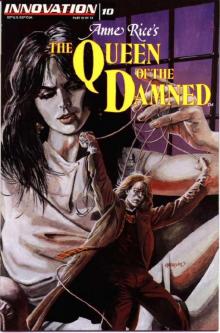 The Queen Of The Damned
The Queen Of The Damned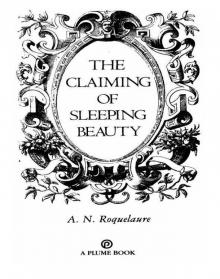 The Claiming of Sleeping Beauty
The Claiming of Sleeping Beauty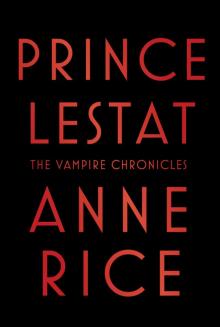 Prince Lestat
Prince Lestat The Master of Rampling Gate
The Master of Rampling Gate The Vampire Lestat
The Vampire Lestat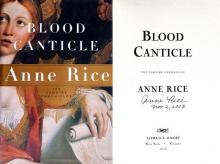 Blood Canticle
Blood Canticle Beauty's Release
Beauty's Release Pandora
Pandora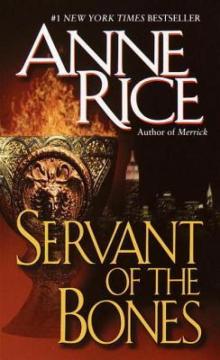 Servant of the Bones
Servant of the Bones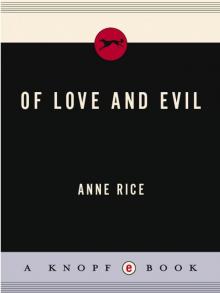 Of Love and Evil
Of Love and Evil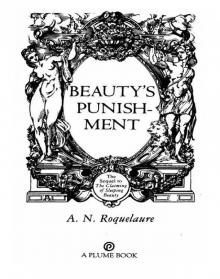 Beauty's Punishment
Beauty's Punishment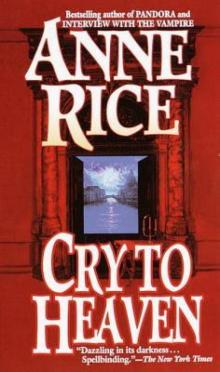 Cry to Heaven
Cry to Heaven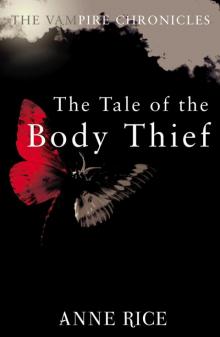 The Tale of the Body Thief
The Tale of the Body Thief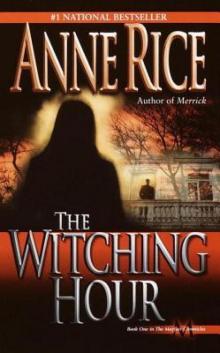 The Witching Hour
The Witching Hour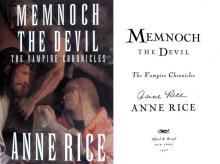 Memnoch the Devil
Memnoch the Devil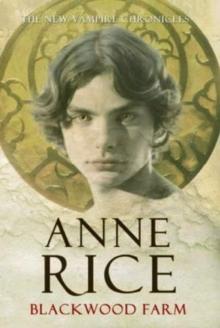 Blackwood Farm
Blackwood Farm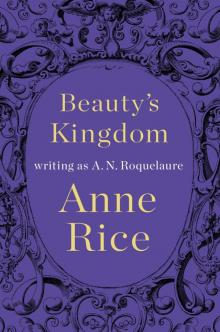 Beauty's Kingdom
Beauty's Kingdom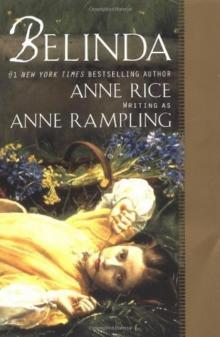 Belinda
Belinda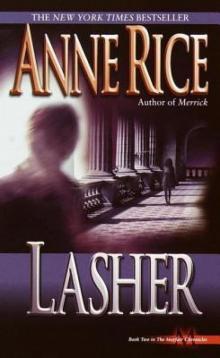 Lasher
Lasher Vittorio, the Vampire
Vittorio, the Vampire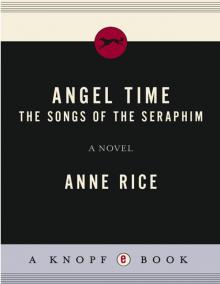 Angel Time
Angel Time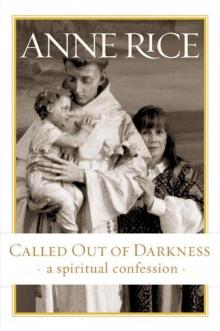 Called Out of Darkness: A Spiritual Confession
Called Out of Darkness: A Spiritual Confession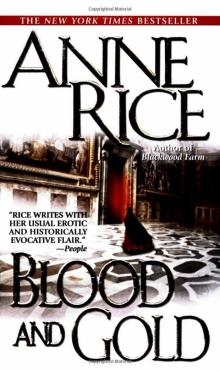 Blood And Gold
Blood And Gold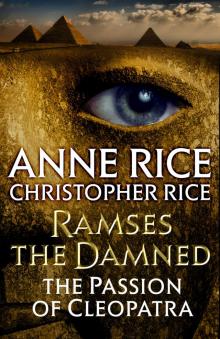 The Passion of Cleopatra
The Passion of Cleopatra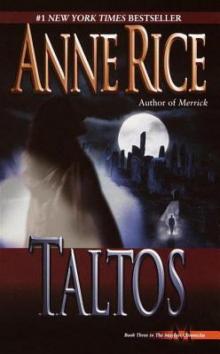 Taltos
Taltos Exit to Eden
Exit to Eden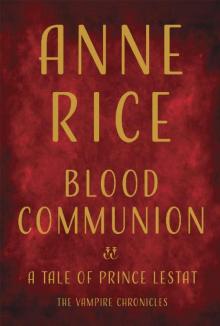 Blood Communion (The Vampire Chronicles #13)
Blood Communion (The Vampire Chronicles #13) The Wolf Gift
The Wolf Gift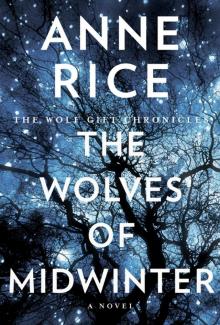 The Wolves of Midwinter
The Wolves of Midwinter Prince Lestat and the Realms of Atlantis
Prince Lestat and the Realms of Atlantis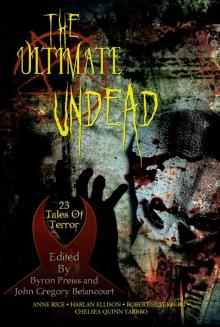 The Ultimate Undead
The Ultimate Undead The Vampire Lestat tvc-2
The Vampire Lestat tvc-2 The Road to Cana
The Road to Cana Taltos lotmw-3
Taltos lotmw-3 Merrick tvc-7
Merrick tvc-7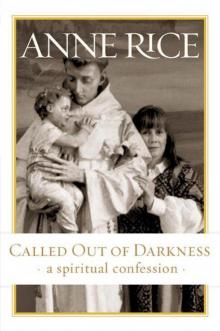 Called Out of Darkness
Called Out of Darkness Pandora - New Vampires 01
Pandora - New Vampires 01 Bllod and Gold
Bllod and Gold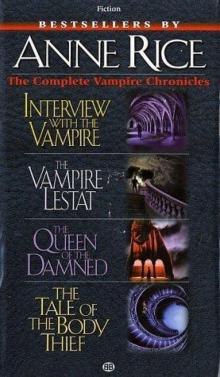 The Queen Of the Damned: Vampire Chronicles
The Queen Of the Damned: Vampire Chronicles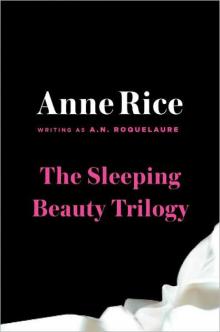 The Sleeping Beauty Trilogy
The Sleeping Beauty Trilogy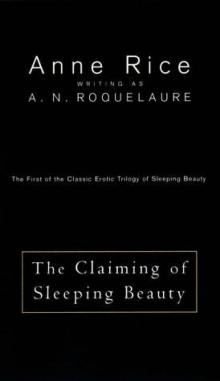 The Claiming of Sleeping Beauty b-1
The Claiming of Sleeping Beauty b-1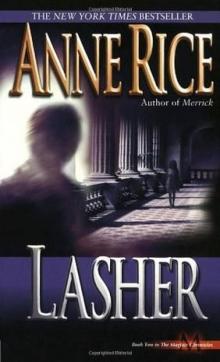 Lasher lotmw-2
Lasher lotmw-2 The Tale of the Body Thief tvc-4
The Tale of the Body Thief tvc-4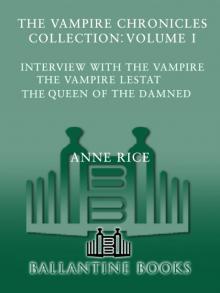 The Vampire Chronicles Collection
The Vampire Chronicles Collection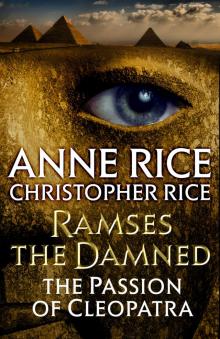 Ramses the Damned
Ramses the Damned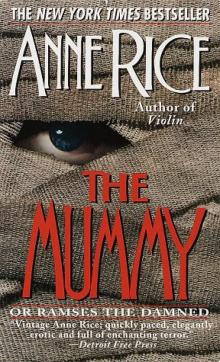 The Mummy - or Ramses the Damned
The Mummy - or Ramses the Damned Vittorio, The Vampire - New Vampires 02
Vittorio, The Vampire - New Vampires 02 The Vampire Armand tvc-6
The Vampire Armand tvc-6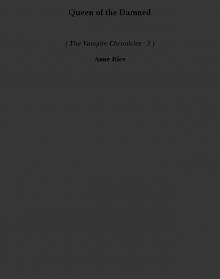 Queen of the Damned tvc-3
Queen of the Damned tvc-3 The witching hour lotmw-1
The witching hour lotmw-1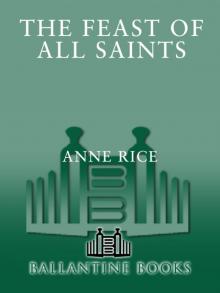 Feast of All Saints
Feast of All Saints Queen of the Damned
Queen of the Damned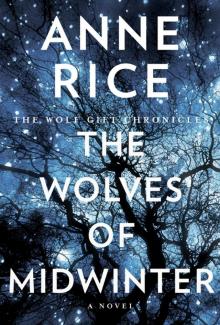 The Wolves of Midwinter twgc-2
The Wolves of Midwinter twgc-2 The Mummy
The Mummy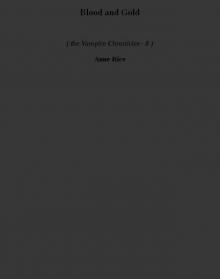 Blood and Gold tvc-8
Blood and Gold tvc-8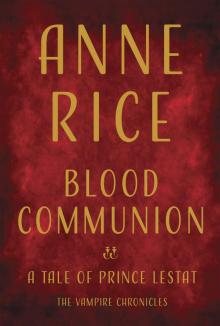 Blood Communion
Blood Communion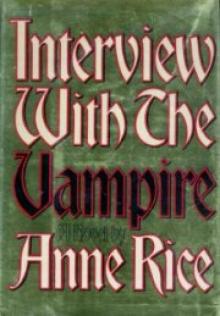 Interview with the Vampire tvc-1
Interview with the Vampire tvc-1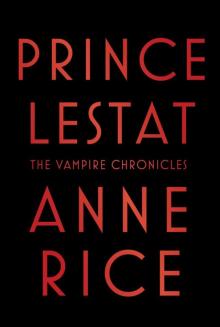 Prince Lestat: The Vampire Chronicles
Prince Lestat: The Vampire Chronicles